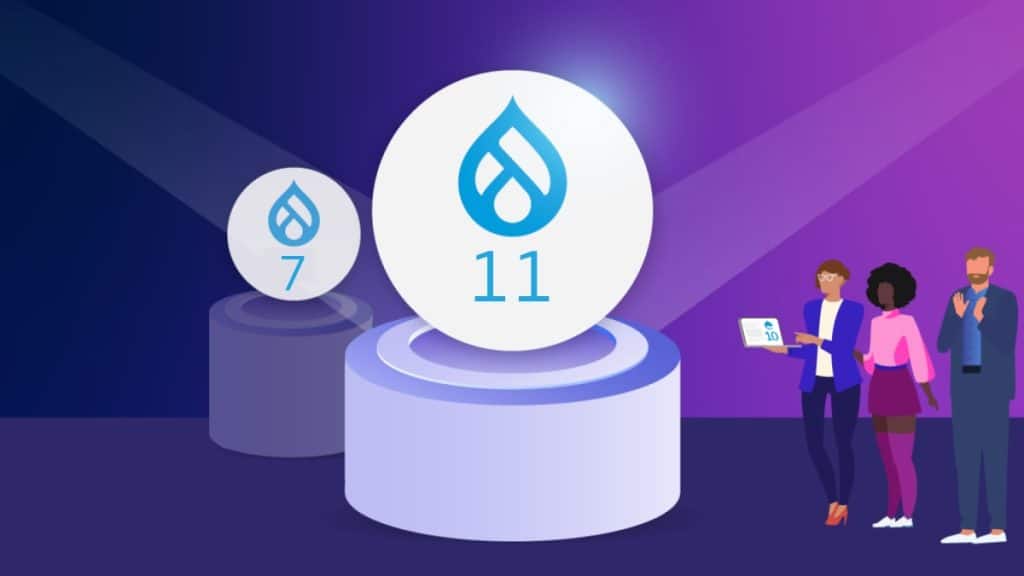With the release of Drupal 11, many site owners are contemplating an upgrade. A smooth migration is crucial to ensure that your website maintains its performance, security, and features without interruption.
Moving to Drupal 11 offers enhanced functionalities, better security, and improved content management capabilities. But how do you properly prepare for this transition? Whether you’re handling the migration in-house or relying on professional Drupal development services, thorough preparation is the key to success.
In this blog, we’ll walk you through the essential steps to prep your site for Drupal 11 migration, and why working with a Drupal development company specializing in Drupal migration services is a smart move.
1. Audit Your Current Drupal Site
The first step in preparing for a Drupal 11 migration is conducting a thorough audit of your current site. This involves reviewing:
- Modules: Identify custom and contributed modules in use. Some modules from Drupal 7 or older versions, may not be compatible with Drupal 11. Research which modules will require updates or replacements.
- Themes: Assess if your current theme will work with Drupal 11 or if you need to redesign it for the new framework.
- Content: Review and clean up outdated content, ensuring unnecessary data isn’t transferred during the migration.
Auditing your current site comprehensively helps in identifying potential issues early, ensuring a smoother transition. Partnering with a Drupal development company offering Drupal migration services can help streamline this process.
2. Update Core and Contributed Modules
One of the main tasks during any Drupal migration is ensuring that all core and contributed modules are up-to-date. Many modules from Drupal 7 may need to be updated or replaced to work with Drupal 11. Here’s how to approach it:
- Check for official module releases compatible with Drupal 11.
- Deactivate and uninstall unused or outdated modules.
- If custom modules are heavily used, you might need assistance from Drupal experts to refactor or rewrite them for Drupal 11.
Keeping your modules updated and secure will ensure that your website performs optimally post-migration.
3. Back Up Your Site and Data
Before starting any major Drupal migration, always create backups of your site. This ensures that in case something goes wrong, you can restore your site to its original state. Use trusted tools to:
- Back up your database.
- Back up your file system, including modules, themes, and media files.
Professional Drupal migration services can also assist in setting up automatic backups for a risk-free migration process.
4. Check Custom Code Compatibility
Custom code can be one of the trickiest parts of a Drupal migration. Whether it’s custom themes or bespoke functionality built for your specific site, it’s crucial to test this code against Drupal 11 to avoid unexpected errors. Here are some tips:
- Ensure your custom code adheres to Drupal’s coding standards.
- Refactor any deprecated APIs or functions no longer supported by Drupal 11.
- Rely on Drupal development services to help modify and test your custom code for full compatibility.
Professional Drupal developers can assist in optimizing your custom code, reducing risks during the migration.
5. Plan for Theme Adjustments or Redesign
Themes can vary significantly between Drupal 7 and Drupal 11, so it’s essential to review the front end of your website during the migration. While some themes may only need minor adjustments, others may require a complete redesign. Evaluate the following:
- Responsiveness: Ensure that your theme is mobile-friendly and fully responsive.
- Accessibility: Make sure your theme complies with accessibility standards for improved user experience.
- Speed Optimization: Leverage Drupal 11 features to improve page load times and overall site performance.
Collaborating with a professional development agency ensures your theme adjustments or redesigns are aligned with best practices.
6. Test and Optimize Before Going Live
Once you’ve completed the Drupal 11 migration, it’s critical to thoroughly test your site. Testing ensures that all functionality is working as expected before going live. Key areas to focus on include:
- Performance: Test page load speeds and identify potential bottlenecks.
- Functionality: Test every module, custom feature, and theme component to verify functionality.
- Security: Conduct security audits to ensure the site is protected against vulnerabilities.
Utilizing professional Drupal migration services can help ensure your site is fully optimized and secure before the official launch of Drupal 11.
7. Work with a Professional Drupal Development Company
While migrating to Drupal 11 can offer many benefits, the process is complex and requires technical expertise. If your team lacks the necessary skills or experience, it’s wise to partner with a Drupal development company specializing in Drupal migration services.
- Expertise: Seasoned Drupal professionals will have extensive experience in handling all aspects of Drupal migrations.
- Customization: They can assist with custom code adjustments, theme redesign, and API integrations.
- Support: Post-migration support is crucial to resolve any bugs or issues that may arise after the migration is complete.
A reliable partner will ensure a seamless and successful Drupal 11 migration without compromising your website’s functionality.
Conclusion: Make Your Drupal 11 Migration a Success
Migrating to Drupal 11 is a major step that can offer enhanced performance, security, and a better user experience. By following the steps outlined in this blog, and partnering with an expert Drupal development company offering professional Drupal migration services, you can ensure a smooth transition.
Remember, the key to a successful Drupal migration lies in planning, testing, and collaboration with professionals. Get started today and future-proof your website with Drupal 11.
